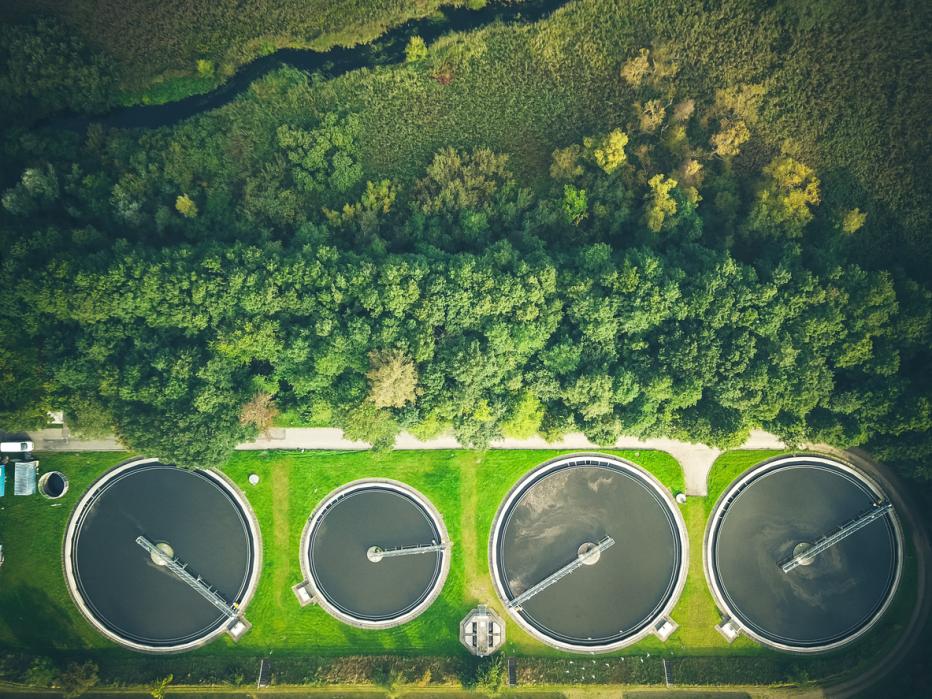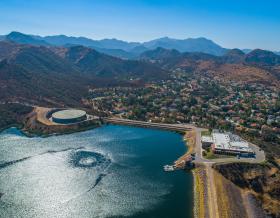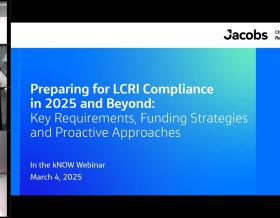
The water sector in the U.K. faces a few deep challenges. The climate crisis is one, and its impact is felt in extreme weather events, water systems and on the capability and capacity of the supply chain. Risk mitigation and long-term financing are additional challenges within large-scale critical infrastructure programs, and as a result, they have higher costs and associated risk levels. All these factors combine to create a challenging space for infrastructure planning and delivery.
However, these challenges also offer opportunities for industry innovation – and this is illustrated by the success of programs such as the Thames Tideway Tunnel. By opting for the correct delivery model, partners can collaborate with governments and stakeholders to facilitate resilient water infrastructure that’s more resource-efficient and sustainable. The U.K. government outlined a strategy that includes a proposed budget of $114 billion (£96 billion) for water utilities to develop infrastructure projects between 2025 and 2030 — and that doesn’t include Strategic Resource Options (SROs).
The way we have traditionally delivered programs in the U.K. can’t achieve the growth required. We must combine lessons from past project and program successes with innovative new models, methods and technologies. We need cross-sector, insight-driven collaborative teams to challenge norms and reinvent what is possible. We need to upskill the capabilities and capacities of the water industry supply chain and continue to deliver safe and reliable water services while addressing current and future challenges.
Delivering these programs will require a fresh approach to contracting and finance. One example is the Direct Procurement for Customers (DPC) model, which helps drive better procurement and delivery mechanisms. It allows water companies in the U.K. to competitively tender for a third party to design, build, finance, operate and maintain assets in their service supply area. It brings together the water regulator, water companies, delivery partners and third-party investors to deliver large-scale projects.
In this article, Geoff Roberts focuses on the Specified Infrastructure Project Regulations (SIPR) model and showing how it offers a compelling, adaptable option for future large programs in the water sector.
What is the SIPR delivery model?
The model was introduced in 2013 to enable a licensee to bid for and deliver the Thames Tideway Tunnel program. It was also envisaged to be the building block for a new way of procuring, contracting and financing future programs. This model enabled, for the first time, an Infrastructure Provider to develop an asset and to own the asset (through a license) for the duration of a defined license period. A regulatory model controls the remuneration of the Infrastructure Provider. According to Ofwat, there are two critical differences between DPC and SIPR:
- The third-party service provider, known as the Infrastructure Provider (or ‘IP’) under SIPR, is granted its own license by Ofwat and is regulated by them directly. Whereas under DPC, the activities of the Competitively Appointed Provider (CAP) are regulated indirectly via the contractual relationship between the CAP and the water company.
- Ofwat is currently only permitted to use the SIPR model under criteria laid out in primary legislation and SIPR regulations. The Water Industry Act 1991 (as amended by the Flood and Water Management Act 2010) limits the applicability of the SIPR regulations to only those projects that are of a size or complexity that threatens the water company’s ability to provide services for its customers; and where delivering the project via this route is likely to result in better value for money.
As Thames Water’s program partner on the Tideway program, we learned five key lessons in the development of the program:
- SIPR success relies on pathfinder preparation and stakeholder inclusivity.
The biggest challenge in these major programs is understanding what needs to be done, who needs to be involved, the level of risk and how it will all be financed. Then, a bespoke approach or framework is needed to drive the collaboration required, especially at the start. This strategic setup is even more critical when you have more than one client, as in some cases, we’ve had five subsidiary clients on a previous program.
A great example of this pre-program preparation is from our work on the London 2012 Olympics, as we followed a special Act that helped us prepare and engage the right stakeholders, define the ideal contracting and financing strategies and understand the possible impacts and implications of the work that was needed to be done. This preparation work — which we call pathfinder work — can take up to over two years. Even though this work requires investment, this pre-program work and effort is instrumental in the success of the SIPR model; it helps to drive down costs and risks.
In the case of Tideway, the success of the program's procurement, contracting and finance strategy was underpinned by the advance understanding, interaction and planning of interfaces with the wider community within which the program is being delivered. This goes beyond traditional stakeholder engagement—the whole procurement and contracting strategy was developed beforehand as a collaboration with key partners. If that consultation and prep work hadn’t occurred, the SIPR model, as outlined, would have had more challenges to achieving success.
- SIPR requires a versatile and adaptable outlook.
Today’s procurement and contracting norms, including risk profiles, may not be the basis for what’s necessary or works in the future. To overcome this, you must continually innovate and create new processes and models. This break from the traditional approach frequently challenges the delegated authority of most regulated companies.
Market expectations within the sector are dynamic, and what works on one program can form a stepping stone to the next program. However, it should never be viewed as the new market norm, as every large program is unique and the next step in the evolution of using the SIPR model.
- Recruiting experts with program experience is vital for SIPR success.
While the industry faces a skills shortage, it’s even more crucial that programs don’t ignore the lessons from previous successes and, in some cases, failures. This isn’t just about establishing precedents; it’s about understanding why something was or wasn’t done and the impact. These earned insights empower program decision-makers to make better choices in future programs and to avoid unnecessary issues or risks. That’s why recruiting experts with the right track record to carry over these lessons is vital.
Beyond experience, hiring cross-sector talent and driving stakeholder engagement is critical. Any new contracting and procurement strategy must be iterative and require input from many players beyond the traditional employer and contractor. It’s not just about increasing the number of stakeholders and specialist partners; it also requires much higher levels of engagement and socialization to bring governments, stakeholders, clients, investors and the supply chain on the journey toward future success.
The SIPR procurement and contracting strategy at Tideway succeeded because the client engaged the government, treasury, regulator, stakeholders, investors and the supply chain in its development process. This is, and always has been, the key to successful program delivery. It goes far beyond an employer, a contractor, a contract and a site.
A second related learning is that a company or individual can’t have all the skillsets and experience necessary to create the best, most resource-efficient, climate-neutral and bankable future state platform for a new procurement and contracting strategy. To succeed, you must integrate all subject matter experts and specialists — sometimes, this requires cross-sector insights and skills.
- Understanding what doesn’t or won’t work is critical in operationalizing the SIPR model.
Knowing why many alternative procurement, contracting and delivery approaches were discounted is equally, if not more important than being able to read and understand a procurement and contracting model being developed and chosen. These reasons and motivations must be documented, as all this information is often lost. Emphasizing and focusing on why specific models aren’t being used, and by extension, what model is being used, increases the chances of the teams involved better understanding the drivers and aspirations of the model choice. The greater the understanding and engagement in this decision-making across the teams, the higher the likelihood of success in collaboration.
- Avoid ‘package behavior’ motivation — strive for a balance for long-term performance.
Our programs are broken down into ‘prime packages,’ smaller infrastructure projects with different stakeholders and partners that combine to deliver the immensely complex deliverables. Now, the key here is to ensure that the incentivization mechanisms for these packages don’t drive short-term behaviors that counter the program's long-term outcomes. One of the keys to making SIPR earn those complex deliverables is to ensure that the motivation comes more from the overall collaboration agreement between all stakeholders rather than the individual package contracts.
This approach became part of the underlying principles in the creation of the Project 13 model, which creates a delivery enterprise with subsets of incentivization. The principle incentivization for the enterprise and membership in it is achieving the overall purpose of delivering the outcome. The learnings on Tideway directly influenced this. It also requires defining accountability and responsibility for the packages, as risk needs to be carefully shared across all the stakeholders.
The bottom line is that all water sector stakeholders must lean in and help drive innovation and contribute toward reframing financial, procurement and contracting models and strategies. There are several exciting delivery model opportunities; for example, we can start repackaging and bundling different types of infrastructure to create a wider, more efficient and bankable outcome. We can also choose and implement the best parts from other models to craft a better future solution. The only asterisk here: we must cherry-pick the right talent, experience and insights from previous programs to safeguard success.
Even though there are raised regulatory and supply chain challenges, programs like Tideway prove that we don’t have to settle for the status quo or what’s been done before: let’s work together to reframe the opportunity, apply lessons from the past and create the platform for a better way.
About the author

Geoff Roberts has spent over 30 years advising on dozens of the largest infrastructure programs in the U.K. and Europe. Geoff’s market-leading expertise includes applying a comparative and commercial approach to developing and structuring program governance, developing package procurement strategies including alternative finance, contract negotiation and drafting, and program delivery.












































